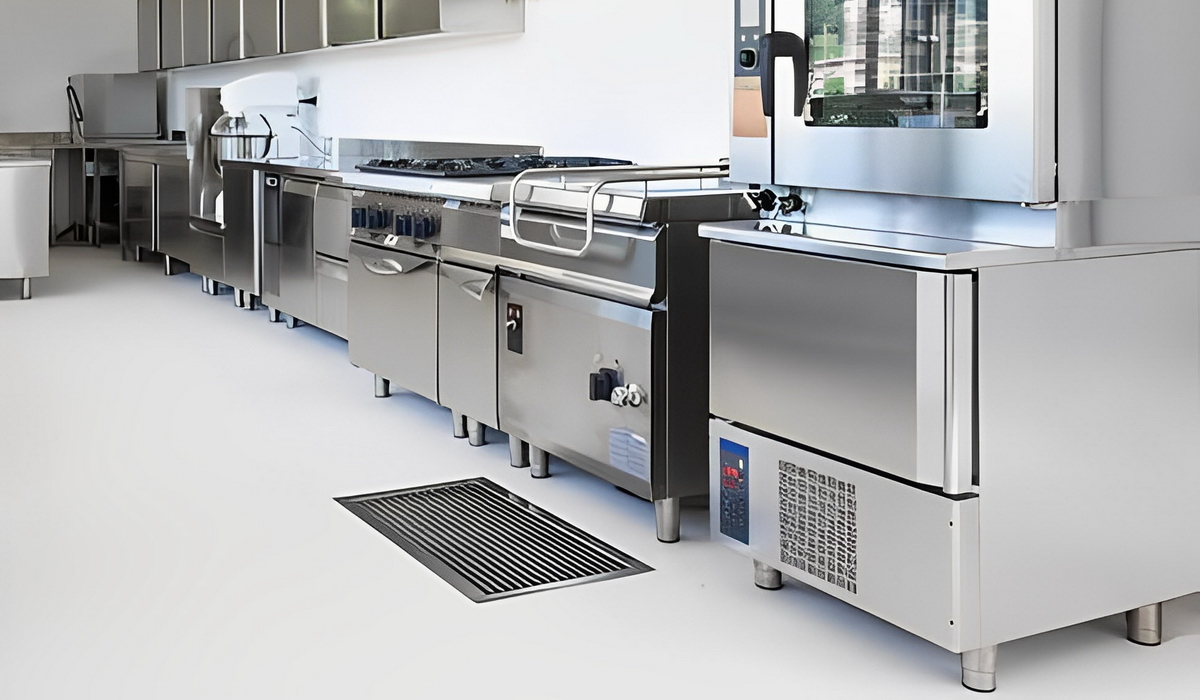
Because cooking and cleaning can be messy, it’s important to have drainage systems such as trench drains in your commercial kitchens that are capable of handling large amounts of water quickly and efficiently. There are many options available on the market, such as a slot drain, but a trench drain system is often a popular choice.
Learn everything you need to know about trench drains by reading this guide.
We’ve included what trench drains are, how they work, the advantages and disadvantages of using them in your commercial kitchen, and more.
The Importance of Commercial Kitchen Drainage
Before we dive into the details of trench drains, it’s important to understand why having proper drainage in your commercial kitchen is critical.
By doing so, you’ll be able to make an informed decision about which drainage system is right for your needs.
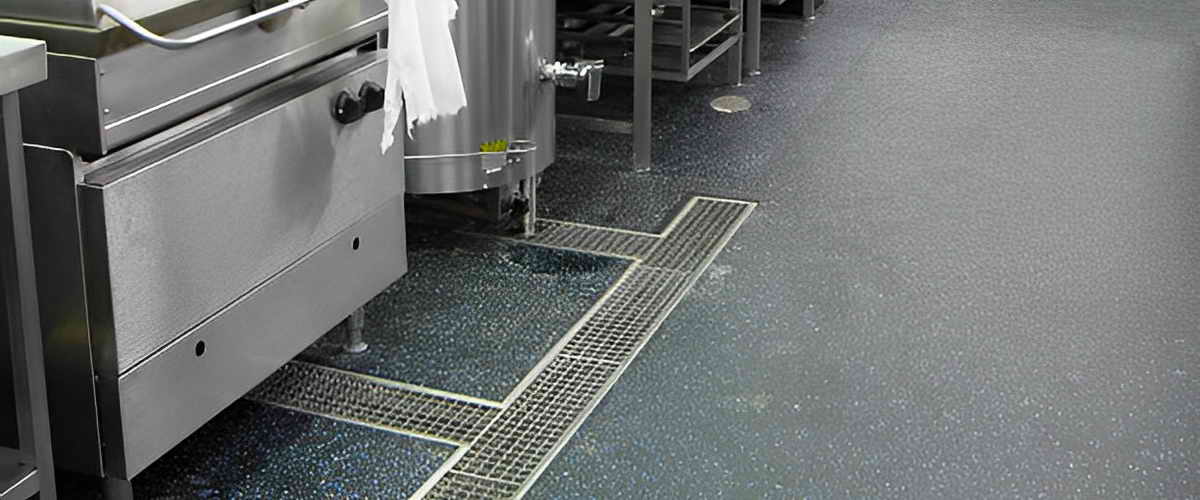
There are many reasons why proper drainage in your commercial kitchen is a must, and here are just a few of them:
Avoid Accidents
Spills from food prep, cleaning, and other activities can quickly create slippery surfaces that are dangerous for your staff and customers.
When water starts to build up on your kitchen floors, it can lead to accidents such as slips and falls.
A properly placed drainage system will help you avoid all this.
Stop the Spread of Bacteria
Foul odors aren’t the only problem caused by slow water drainage in commercial kitchens.
Slowing the flow rates of water down allows bacteria to spread and thrive, which can put your customers and employees at risk.
Extreme temperatures and moisture can create the perfect conditions for bacteria to grow and multiply, causing both surface and air-borne contamination.
With a reliable, proper drainage system, you can effectively prevent this from happening since water and other liquids will be carried away from your kitchen quickly and efficiently.
Follow Government Regulations
Regulations, set by the Food and Drug Administration (FDA) and the Occupational Safety and Health Administration (OSHA), require proper drainage in commercial kitchens for safety and sanitation.
If you fail to follow government regulations in your commercial kitchen, you may face fines and other penalties.
For example, your kitchen could be shut down if reports of poor drainage or other sanitation issues are brought to the attention of regulators.
To avoid these problems, it is critical to invest in high-quality drains.
What Is a Trench Drain?
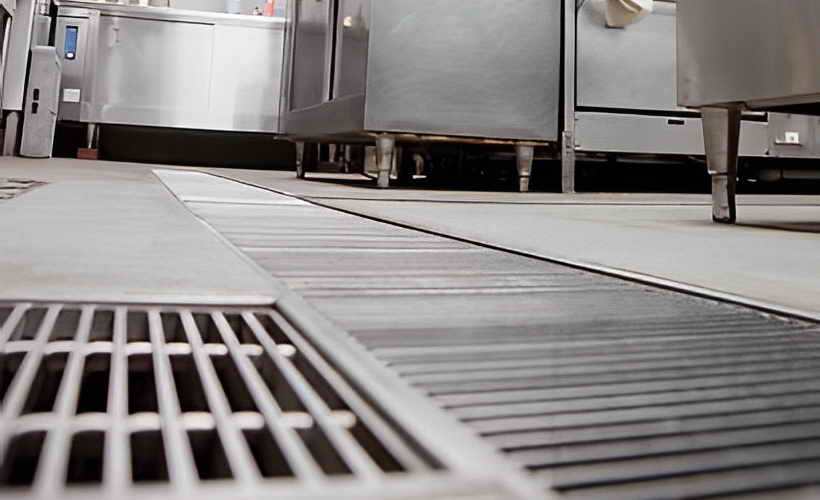
Trench drain systems are above-the-ground floor drain that is composed of a trough drain or channel-style body with a grooved grate on top to keep large solids out of the drainage system.
This type of drain is usually made of materials such as cast iron, plastic, or stainless steel.
It sits flush along the floors of the commercial kitchen and is designed to channel away excess water with ease.
The trench drain system features a grid-like structure that allows it to filter out blockages, while also allowing liquids, solid waste, and food debris to flow through easily.
How Does a Trench Drain Work?
Unlike conventional drainage systems, such as slot and floor drains, a trench drain is more versatile and can be installed almost anywhere within a kitchen site.
This makes them ideal for capturing water from the most congested areas, such as near food prep stations and dishwashing stations.
The main difference between a trench drain and conventional drainage is that the latter typically relies on gravity to move excess liquids down through a pipe.
This can be problematic in some spaces, especially if the drain is on a sloped floor.
On the other hand, trench drains use a combination of gravity and suction to move water away effectively.
The Benefits of Using a Trench Drain for Commercial Kitchens
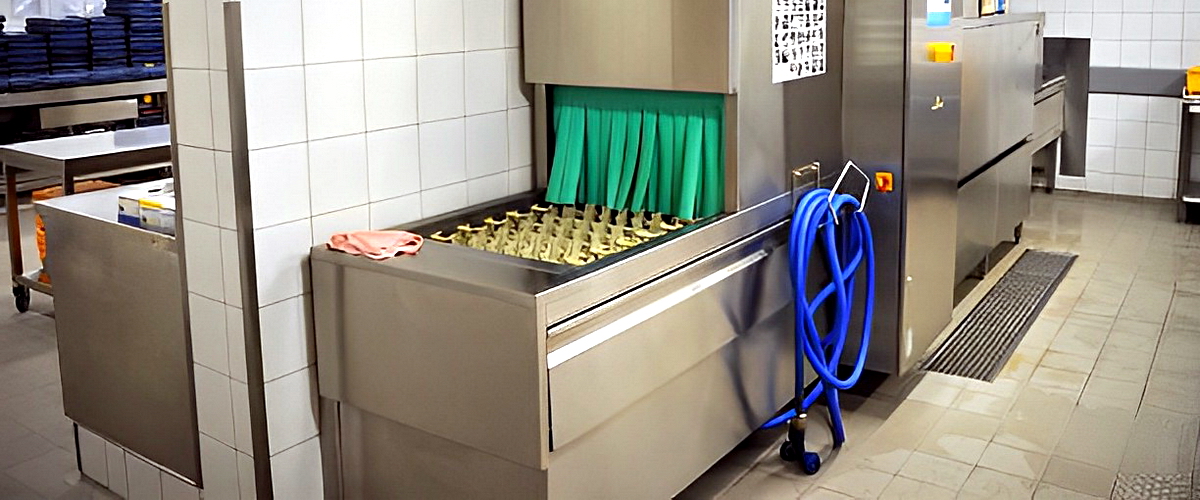
You’d be surprised to know the many benefits that trench drains offer to commercial kitchens.
Some of the ones you can expect are:
Prevents Clogs and Standing Water
The wide channel of a trench drain is able to capture large amounts of water and other liquids, preventing them from building up on the floor and creating standing water.
Clogged drains are also less likely to occur since the drain is able to filter out large food waste and other debris.
Grates Cover Avoids Accident
Another benefit of the trench drain grate is that it can help keep your employees safe.
The grid-like structure and open design allow workers to see any potential hazards or tripping hazards, such as broken glass or debris.
This can help reduce the risk of accidents in your kitchen.
Easy to Clean
You don’t really need specialized equipment to clean your trench drain.
All you need is a powerful pressure washer hose, and you can easily remove any built-up food waste and grease in your clogged drains.
Best Way to Drain Solid Materials
Solids are a common kitchen challenge, especially when they are large in size and volume.
A trench drain is designed to handle these types of materials effectively, thanks to its wide channel and open grate.
The Disadvantages of Trench Drains for Commercial Kitchen Drainage
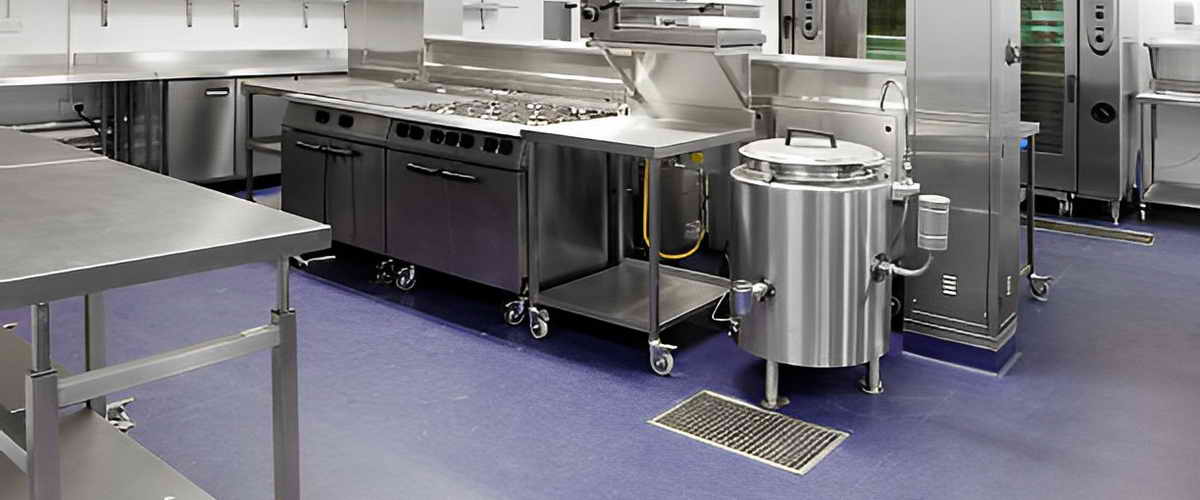
While trench drains do offer many benefits, there are some drawbacks that you should also be aware of.
Some of the downsides include:
Trench Drain Systems Are Noticeable
In terms of aesthetics, trench drain systems are not going to be the most attractive feature of your kitchen compared to a slot drain.
Its open design and visible drain channel can be quite disruptive to the overall look of your kitchen.
Requires Regular Maintenance
Trench drainage systems will require regular maintenance and upkeep in order to maintain their functionality.
This includes regular cleaning of the grate, as well as occasional inspections for signs of corrosion or damage, especially with stainless steel drains.
Risk of Accidents Without Grate Overs
While the grate over a trench drain is an excellent way to keep workers safe, there could be a risk of injury if it gets removed or misplaced.
If your kitchen staff are unaware that the grate is missing, they may trip or fall over the exposed channel and cause serious harm to themselves.


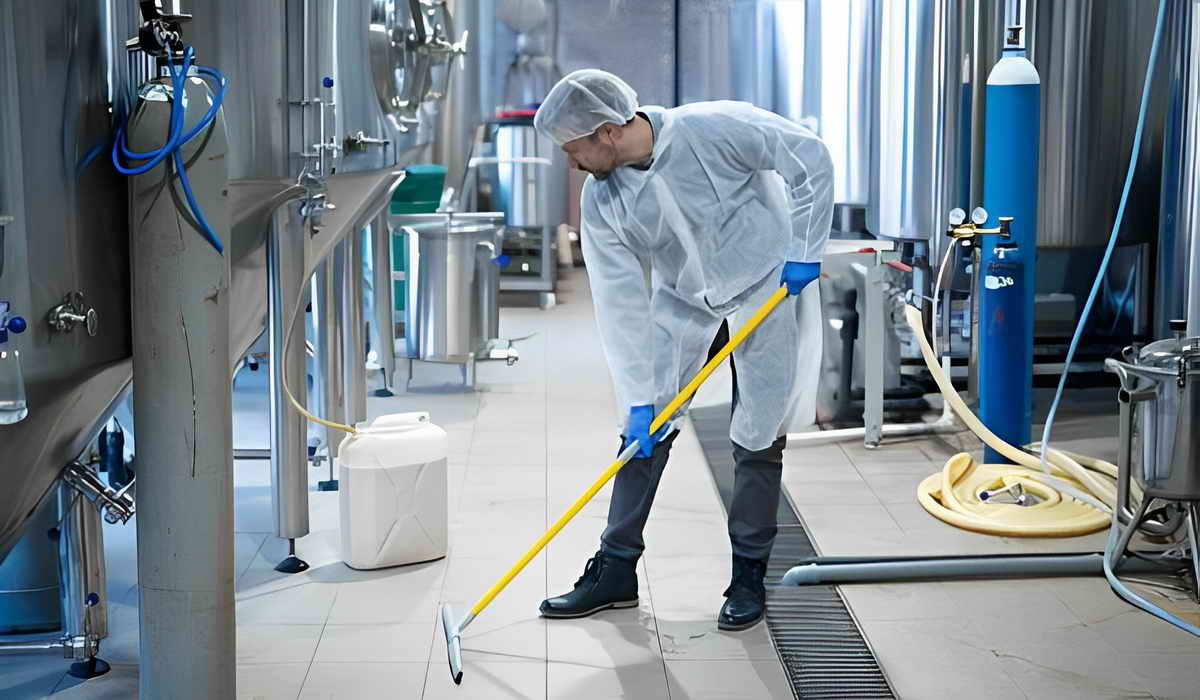
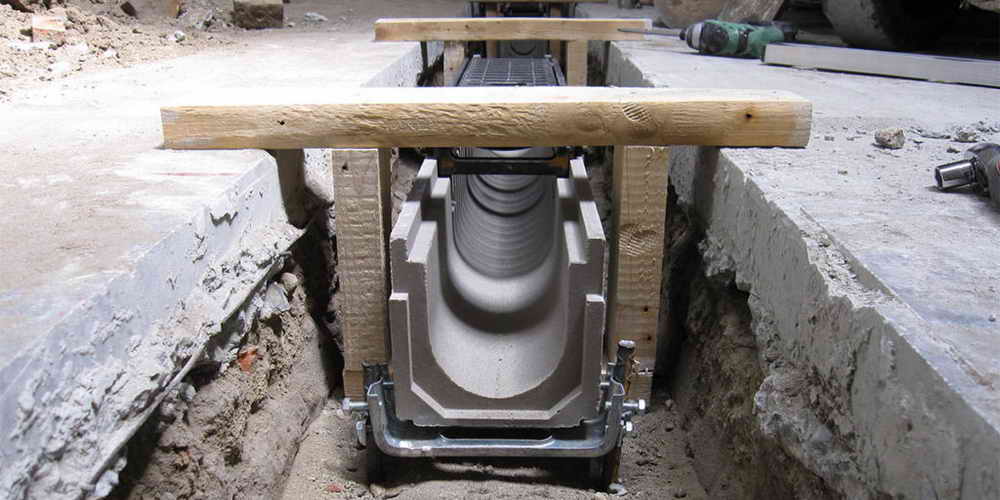
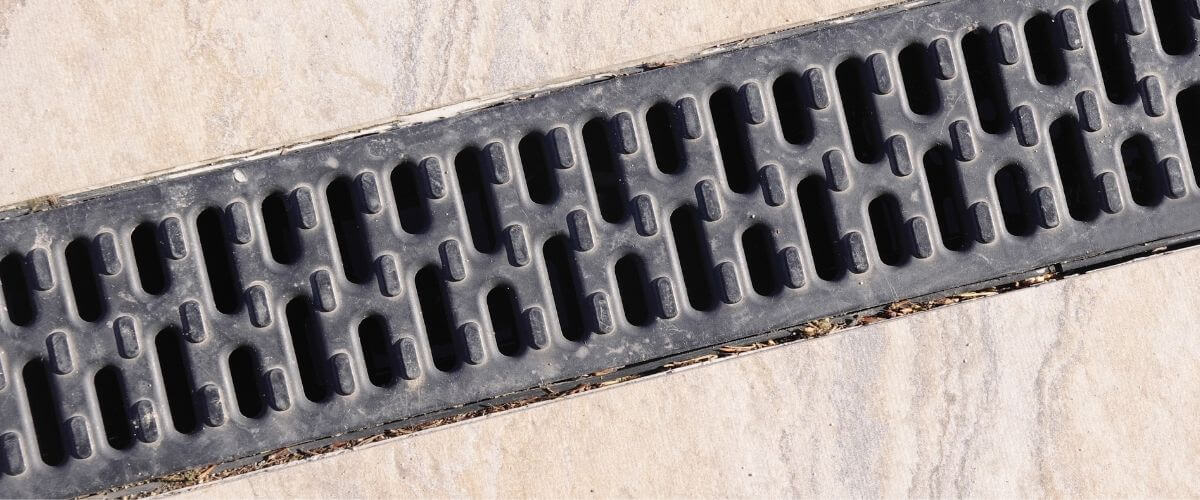
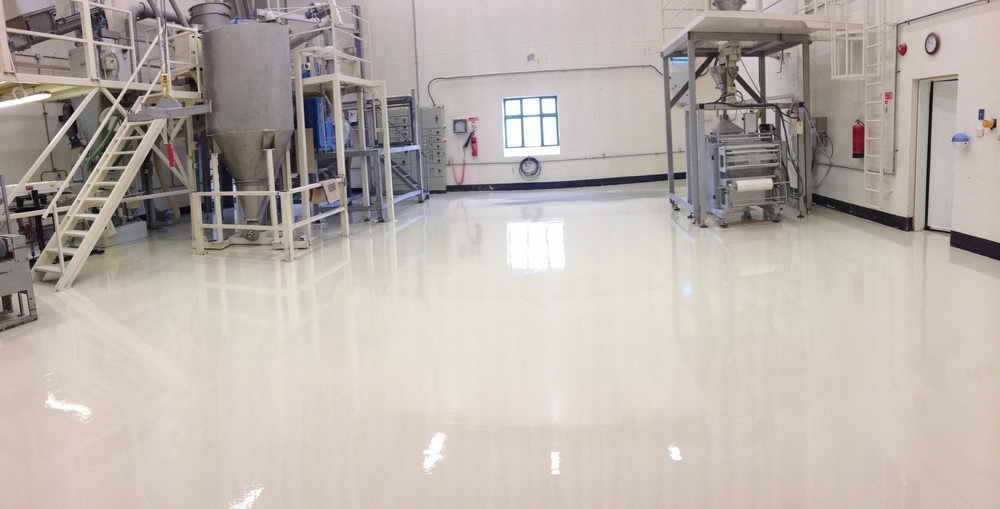
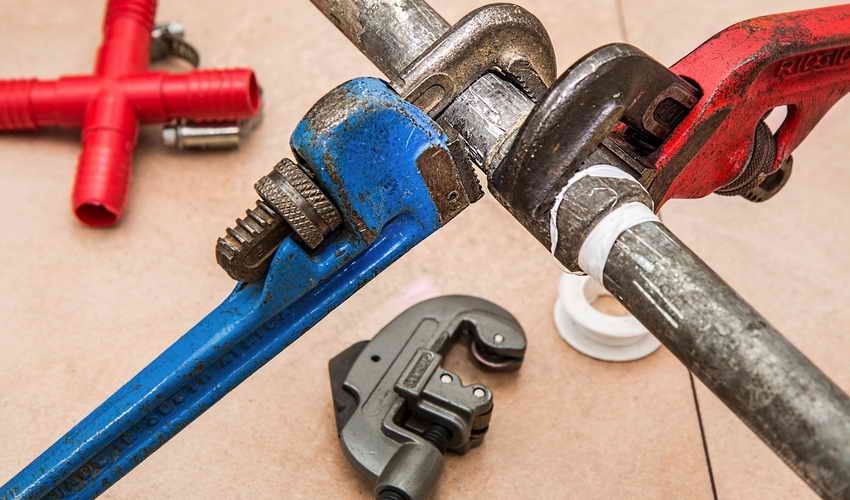
Leave A Comment